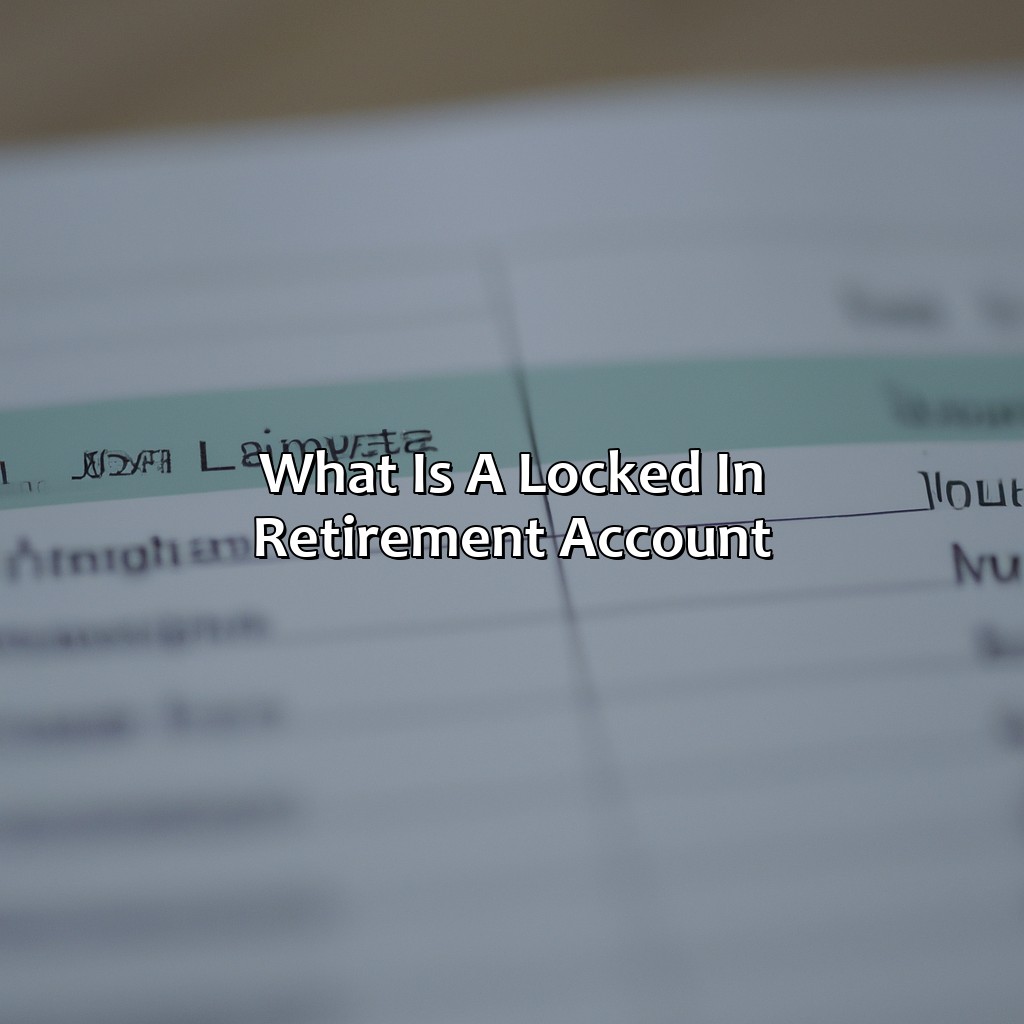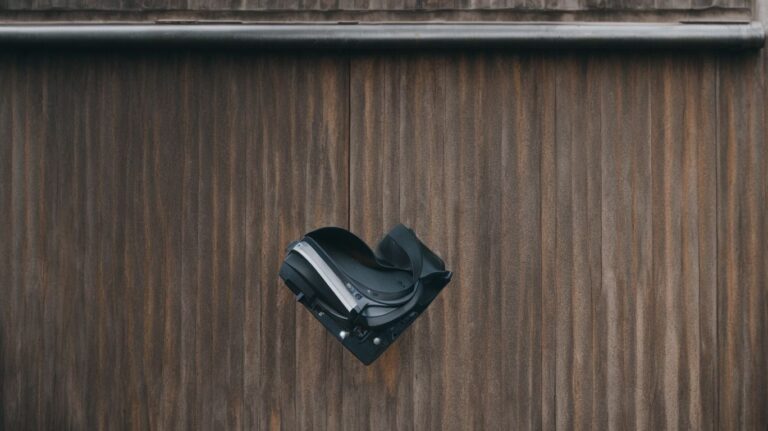What Is A Locked In Retirement Account?
Key Takeaway:
- A Locked-In Retirement Account (LIRA) is a type of retirement savings account where funds are locked-in and cannot be withdrawn until retirement age, typically between 55 to 65 years old.
- Benefits of a LIRA include tax deferral, which allows your funds to grow tax-free until withdrawal, and creditor protection, which shields your savings from creditors in the event of a financial crisis.
- Accessing funds from a LIRA can be done through approved transfers for certain situations, such as transferring funds to a registered retirement savings plan (RRSP) or a registered pension plan (RPP), or through financial hardship in specific circumstances where immediate access to funds is necessary.
- Provincial regulations on LIRAs vary, with the Ontario Pension Benefits Act and the Pension Benefits Standards Act (British Columbia) being two examples of provincial legislation governing LIRAs.
- When considering a LIRA, factors to consider include how much control you want over your investments, your retirement goals, and your current financial situation. Alternatives to a LIRA include other retirement savings plans, such as a RRSP or a tax-free savings account (TFSA).
Have you been considering investing in a retirement plan, but are unsure of what a locked in retirement account is? You are not alone. Unlock the mysteries of the locked in retirement account and discover how it can help you achieve financial security.
Definition of Locked-In Retirement Account (LIRA)
Locked-In Retirement Accounts (LIRA) are investment accounts in which retirement savings are held until the account holder reaches retirement age. The funds in LIRAs are “locked-in,” which means that they cannot be withdrawn for any reason other than retirement or under certain conditions such as financial hardship. LIRAs are often offered as an option for employees who have contributed to a pension plan and wish to transfer their funds to a self-directed investment account.
LIRAs are regulated by provincial and territorial laws and have restrictions on withdrawals, transfers, and investments. The account holder is responsible for managing the investments within the account, and the earnings generated by these investments are tax-deferred until they are withdrawn during retirement.
One key aspect of LIRAs is that they provide a level of protection for retirement savings. They are protected from creditors, bankruptcy, and other legal claims.
To maximize the potential for retirement savings growth within a LIRA, it’s important to carefully research and choose appropriate investment options. This should include a balanced portfolio that considers the account holder’s risk tolerance and supposed retirement age.
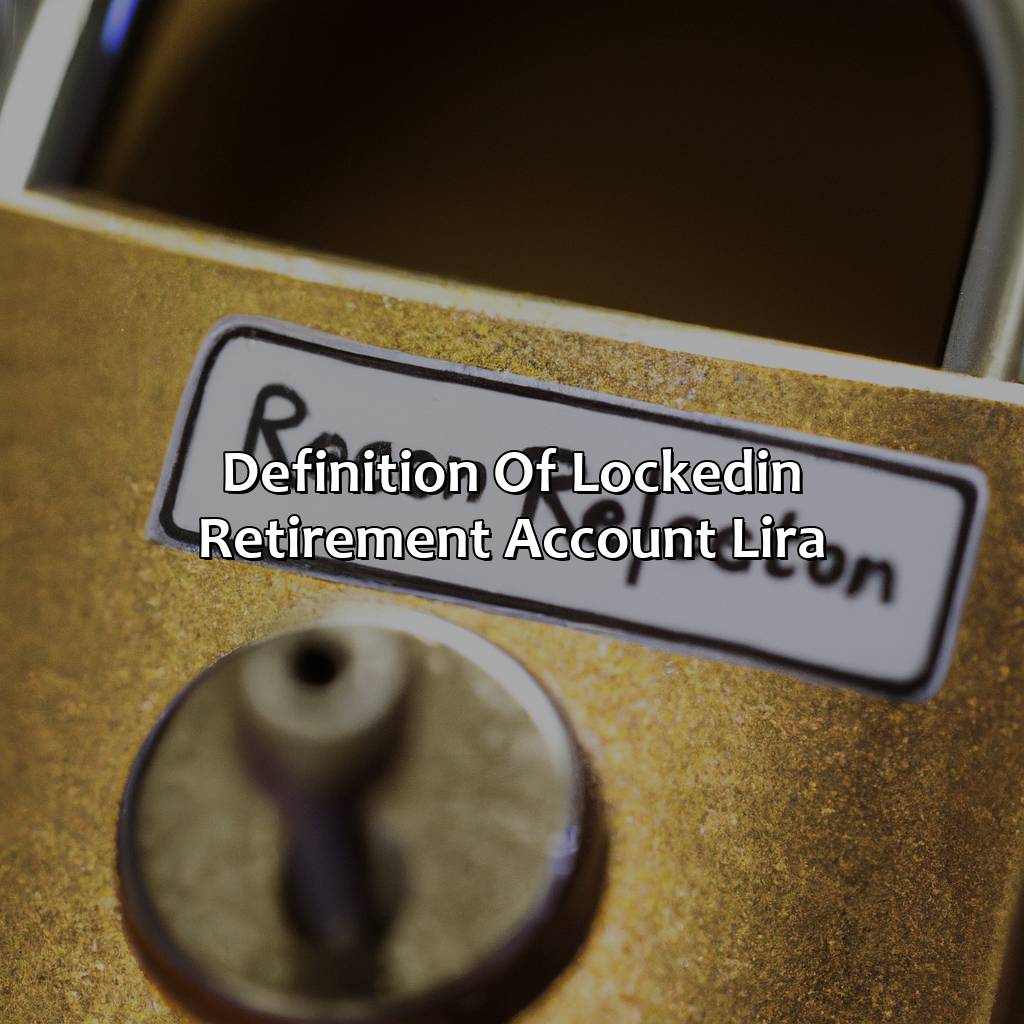
Image credits: retiregenz.com by Adam Woodhock
Benefits of Locked-In Retirement Account
Fully comprehend the benefits of a locked-in retirement account. Investigate its sub-sections: tax deferral and creditor protection. Use these two components to protect your investment. And defer taxes until a later date.

Image credits: retiregenz.com by James Woodhock
Tax Deferral
By deferring tax payments until a later date, a Locked-In Retirement Account (LIRA) provides an opportunity to save for retirement without immediate tax liabilities. This allows for more investment growth over time, ultimately leading to a larger nest egg.
In other words, utilizing a LIRA enables an individual to delay paying taxes on their retirement savings until later in life when they are likely to be in a lower income bracket. This opens up the possibility for greater returns on investments and helps individuals save more money overall.
It’s important to note that pension funds and similar investments typically must be held within a LIRA, hence the “locked-in” aspect of the account. This ensures that the funds are properly used for their intended purpose: financing one’s retirement.
Pro Tip: Though it may seem tempting to hold off on contributing as much as possible until closer to retirement age, consistent contributions over time can lead to substantial increases in account value due to compounded interest.
If creditors come knocking, your Locked-In Retirement Account will stand strong like a bouncer at the club entrance.
Creditor Protection
One of the key advantages of a secure retirement account is its safeguard against creditors. This benefit of locking in a retirement account guarantees that creditors cannot force you to withdraw these assets even if they win judgments against you.
This means that your locked-in retirement account is shielded and protected from potential lawsuits or any debt collection activity caused by unforeseen events such as bankruptcy. The mechanics of this protection differ across various jurisdictions but on average, the legislation provides a certain degree of hedging against an individual’s unpaid liabilities.
It’s noteworthy to mention that creditor protection is critically beneficial for individuals seeking financial prosperity while ensuring that their retirement savings remain intact. Ensuring that funds kept aside are not susceptible to undue interference should be one of the top priorities for someone who intends to retire comfortably.
Pro Tip: It is vital to consult with a learned professional with expertise in asset protection before embarking on opening up a locked-in retirement account. They provide guidance on best practices and strategies geared towards maximizing asset safety while minimizing costs incurred for this sort of security measure.
Unlocking your retirement funds is like breaking into your own safe – except you don’t need a getaway car.
How to Access Funds from Locked-In Retirement Account
You can access your locked-in retirement account funds. To do so, you have some options. For approved transfers and financial hardship, here are the details. Get the funds you require!
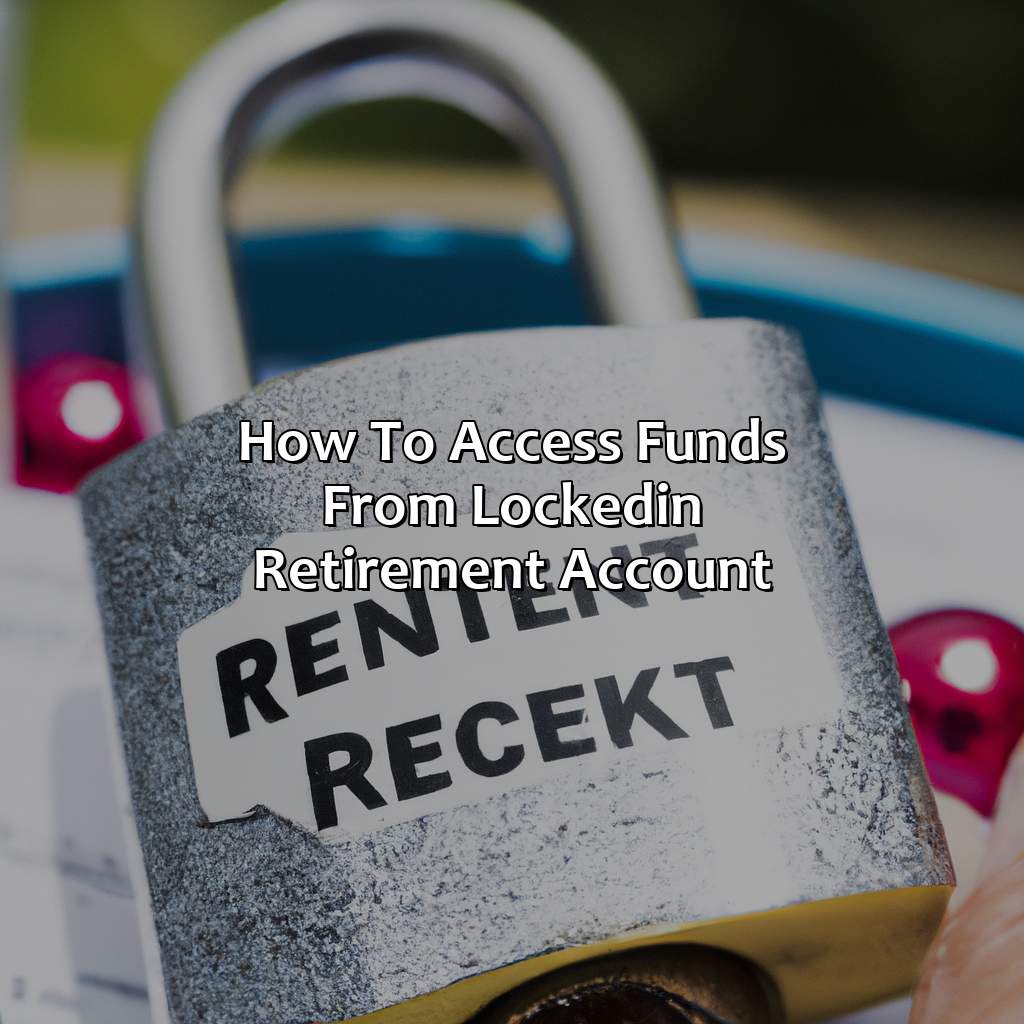
Image credits: retiregenz.com by David Jones
Approved Transfers
For those with locked-in retirement accounts, there are ways to transfer funds without penalty by following the guidelines of ‘Approved Transfers’. These transfers allow individuals to move their retirement savings from one account to another while still maintaining its tax-deferred status.
Below is a table outlining the types of ‘Approved Transfers’ and their respective requirements:
| Transfer Type | Requirements |
|---|---|
| Direct transfer between financial institutions | Submit a request to the new financial institution with information on the old account and any required documentation |
| Conversion to a life income fund (LIF) or locked-in retirement income fund (LRIF) | The individual must meet certain age limits depending on their province or territory |
| Use of funds for education, home purchase, or financial hardship | Approval from the government must be obtained before accessing funds |
It’s important to note that each province or territory may have specific rules surrounding ‘Approved Transfers’, so it’s best to check with local regulatory bodies before initiating any transfer.
When deciding which transfer option is best, consider consulting with a financial advisor who can provide personalized advice. Additionally, it’s recommended that individuals research and compare different financial institutions in terms of fees and investment options to ensure they are getting the most out of their transferred savings.
Financial hardship may feel like being stuck in a locked-in retirement account, but at least you can access the funds from one of those.
Financial Hardship
During times of financial adversity, many individuals are faced with financial struggles. It can be tough to find the necessary funds to cover unexpected or essential expenses. A literal meaning of the heading ‘Financial Hardship‘, it refers to a challenging period that requires financial assistance.
If an individual has funds in a Locked-In Retirement Account (LIRA), they may be able to withdraw them if they meet certain criteria. However, strict regulations govern the withdrawal process from LIRAs and may require legal advice before proceeding.
Some unique details about accessing funds from LIRAs include factors such as what province the account is registered in, how long it has been locked-in, and whether an individual has other forms of retirement income available.
A true story about the challenges of accessing funds from a LIRA involves a couple who were facing significant financial hardship due to medical expenses and unemployment. Despite attempting to withdraw funds from their LIRA, they were met with complications and delays due to provincial regulations. Eventually, with legal assistance, they were able to access the necessary funds to alleviate their financial burden.
Unlocking the mysteries of provincial regulations on locked-in retirement accounts is like trying to solve a Rubik’s cube in the dark.
Provincial Regulations on Locked-In Retirement Account
To comprehend regulations on locked-in retirement accounts, research the Ontario Pension Benefits Act and Pension Benefits Standards Act (British Columbia). These sections illustrate the particular rules Ontario and British Columbia personnel need to obey concerning their retirement funds.

Image credits: retiregenz.com by Joel Duncun
Ontario Pension Benefits Act
Under the legislation of Ontario, the benefits that employees receive from their employers’ pension plans are secured by the Ontario Pension Benefits Act. This act offers protection to employee pensions by establishing minimum standards for plan administration and vesting requirements, regulating funding obligations, and ensuring solvency on the part of plan sponsors. Employers are also required to report annually on their pension plans, and any individual who feels that they have been unfairly treated can make a complaint.
Locked in Retirement Accounts (LIRA) are an investment vehicle designed to provide people with a way to save for retirement. Under provincial regulations, these accounts contain funds from employer pension plans or other locked-in retirement savings mechanisms. The funds are subject to restrictions on withdrawal until a certain age or exceptional circumstances. Jurisdictions across Canada have established guidelines for LIRAs in terms of how they must be managed and invested.
It is important for individuals seeking to set up a LIRA account to understand the specific regulations governing this type of investment under the applicable jurisdiction. In Ontario, LIRA account owners are permitted to transfer their accounts between financial institutions once per year without penalty. Additionally, unlike RRSPs (Registered Retirement Savings Plans), there is no contribution limit for LIRAs.
According to recent research from CIBC Mellon, nearly one-third of Canadians say they do not have a retirement savings plan. (source) When it comes to retirement accounts, the only thing locked in tighter than your money is the government regulations.
Pension Benefits Standards Act (British Columbia)
In British Columbia, the standards for pension benefits are established by a specific act of legislation. This act regulates various aspects of workplace pension plans, such as funding requirements, plan governance and administration, and member rights and obligations. It also sets out rules for locked-in retirement accounts (LIRAs), which prevent employees from withdrawing funds before reaching retirement age.
The Pension Benefits Standards Act in British Columbia ensures that employees receive fair and adequate pensions through a range of regulations. Employers are required to establish pension plans that meet certain minimum standards, including funding levels based on actuarial valuations. Plan members have several rights protected by the Act, such as the right to access information about their pensions and the right to transfer their benefits when changing jobs.
Additionally, LIRAs arise when an employee’s pension benefits are “locked-in” when they change jobs or leave employment to protect long-term savings for retirement. These funds can only be accessed under specific circumstances determined by the Act.
According to the Financial Consumer Agency of Canada, about 20 percent of Canadians aged 55-64 have a LIRA account – with an average value exceeding $100k CAD.
Locked-In Retirement Accounts: because the option to spend all your savings on a glittery new sports car isn’t always the best idea.
Should You Consider a Locked-In Retirement Account?
Wisely choosing whether to open a locked-in retirement account? This section is a must-read! Here you’ll learn factors to think of before opening one, and what alternatives are available. Get the facts on Should You Consider a Locked-In Retirement Account with Factors to Consider, Alternatives to Locked-In Retirement Account as solution!
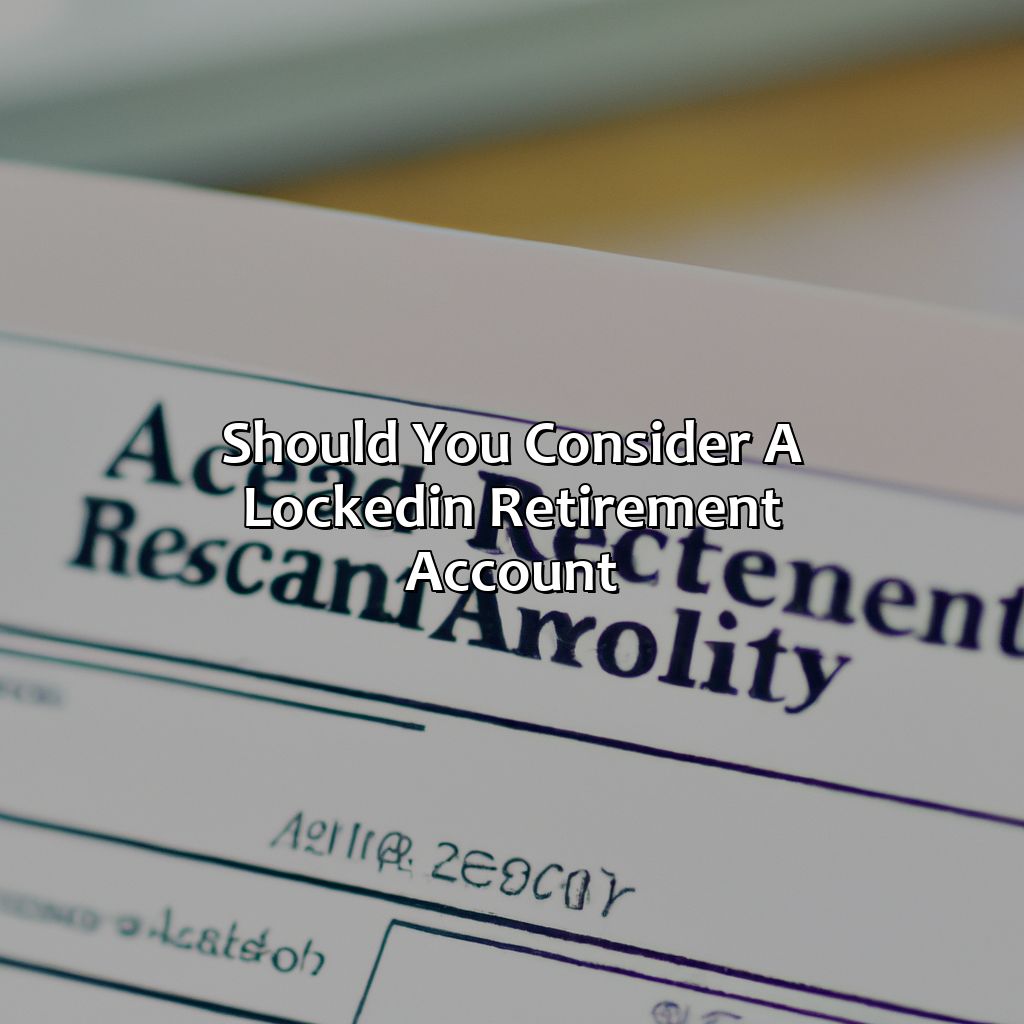
Image credits: retiregenz.com by David Jones
Factors to Consider
If you are considering a Locked-In Retirement Account (LIRA), there are various factors you need to keep in mind. Here is what you should evaluate before making a decision.
| Factors | Details |
|---|---|
| Eligibility | You can only contribute funds that originated from a registered pension plan. |
| Taxation | LIRAs have tax-deferred status, but withdrawals have withholding tax implications. |
| Investment Options | Some LIRAs may offer limited investment options compared to regular RRSPs or TFSAs. |
In addition to these considerations, it is also essential to note that LIRAs come with limited access compared to other retirement accounts. You cannot withdraw money anytime you need it and must adhere to specific rules and regulations governing withdrawals.
If you choose to open a LIRA account, one suggestion would be to consider diversifying your portfolio by investing in various asset classes. This could help minimize risks associated with any single investment type. Moreover, keeping track of the account’s performance regularly would allow for the necessary adjustments needed for optimal results.
Alternatives to Locked-In Retirement Account.
For individuals looking for other investment vehicles with similar benefits as Locked-In Retirement Accounts, here are some options to consider:
- Registered Retirement Savings Plan (RRSP): This is a Canadian personal savings account that can be used to save for retirement since investments are not taxed until withdrawal.
- Tax-Free Savings Account (TFSA): Rather than receiving tax deductions on contributions like in RRSPs, investors allowed non-taxable withdrawals on investments over time.
- Non-Registered Investment Accounts: These accounts offer flexibility in terms of when and how much money you can withdraw. There are no limits on the amount that can be contributed annually, however, returns are often taxed and fees may apply.
While these alternatives offer more flexibility than LIRAs, they may have different rules and restrictions to consider. It’s important to choose wisely based on individual financial goals and risk tolerance.
For example, RRSPs require individuals below a certain age limit to make annual contributions towards it since the accumulated savings will provide taxable income upon withdrawal. TFSA contribution room goes up every year but have limits as to how much one can accumulate. Lastly, non-registered investment accounts might not guarantee return rates due to market volatility which could limit potential gains and increase financial exposure.
Investors should weigh the pros and cons of each option carefully before choosing one that best fits their financial goals.
Some Facts About Locked-In Retirement Account:
A Locked-In Retirement Account (LIRA) is a type of retirement savings account that is subject to government regulations about funds and withdraws. (Source: The Balance)
LIRA is designed to hold pension funds and transfers payments from a pension plan to an account that is locked-in from further withdrawals until retirement. (Source: Investopedia)
LIRA is similar to a Registered Retirement Savings Plan (RRSP), but cannot be withdrawn until a predetermined age and can only be used for retirement income. (Source: Sun Life Financial)
Unlike RRSPs, LIRAs can be transferred to another institution but must continue to be locked-in to protect pension income from being spent too quickly. (Source: The Globe and Mail)
LIRA accounts have different rules for each province and territory in Canada, with some allowing for unlocking in certain circumstances, such as financial hardship, disability, and shortened life expectancy. (Source: Government of Canada)
FAQs about What Is A Locked In Retirement Account?
What is a locked in retirement account?
A Locked-in Retirement Account (LIRA) is a type of Canadian registered retirement savings plan (RRSP) that holds locked-in pension funds. These types of funds are generally accumulated in employer-sponsored pension plans and are restricted until retirement.
How does a locked in retirement account work?
A LIRA works in a similar way to an RRSP, as contributions to the account are tax-deductible and any gains on investment are tax-sheltered. However, funds in a LIRA cannot be withdrawn before retirement age without incurring significant penalties, as they are meant to help provide retirement income.
When can I access funds in my locked in retirement account?
Funds in a LIRA can generally only be accessed once you reach the age of 55 and are eligible to make withdrawals from your pension plan. At that point, you can choose to transfer the funds to a LIF (Life Income Fund) or LRIF (Locked-In Retirement Income Fund) to start receiving regular payments.
What happens to my locked in retirement account if I change employers?
If you change employers, you can usually transfer your LIRA to a new employer-sponsored pension plan or to an individual LIRA with an investment firm. This transfer is usually done tax-free, without incurring any penalties or fees.
What are the penalties for early withdrawal from a locked in retirement account?
Withdrawals from a LIRA before retirement age can have significant penalties, as they are considered early withdrawals. These penalties can include withholding taxes of up to 30%, and additional fees based on the amount withdrawn and the length of time the funds have been in the account.
What are the benefits of a locked in retirement account?
The main benefit of a LIRA is that it can provide a secure source of retirement income by preserving and growing locked-in pension funds. Additionally, contributions to a LIRA are tax-deductible, and investment earnings are tax-free while they remain in the account.
 Checkout this IRS Loophole
Checkout this IRS Loophole 
